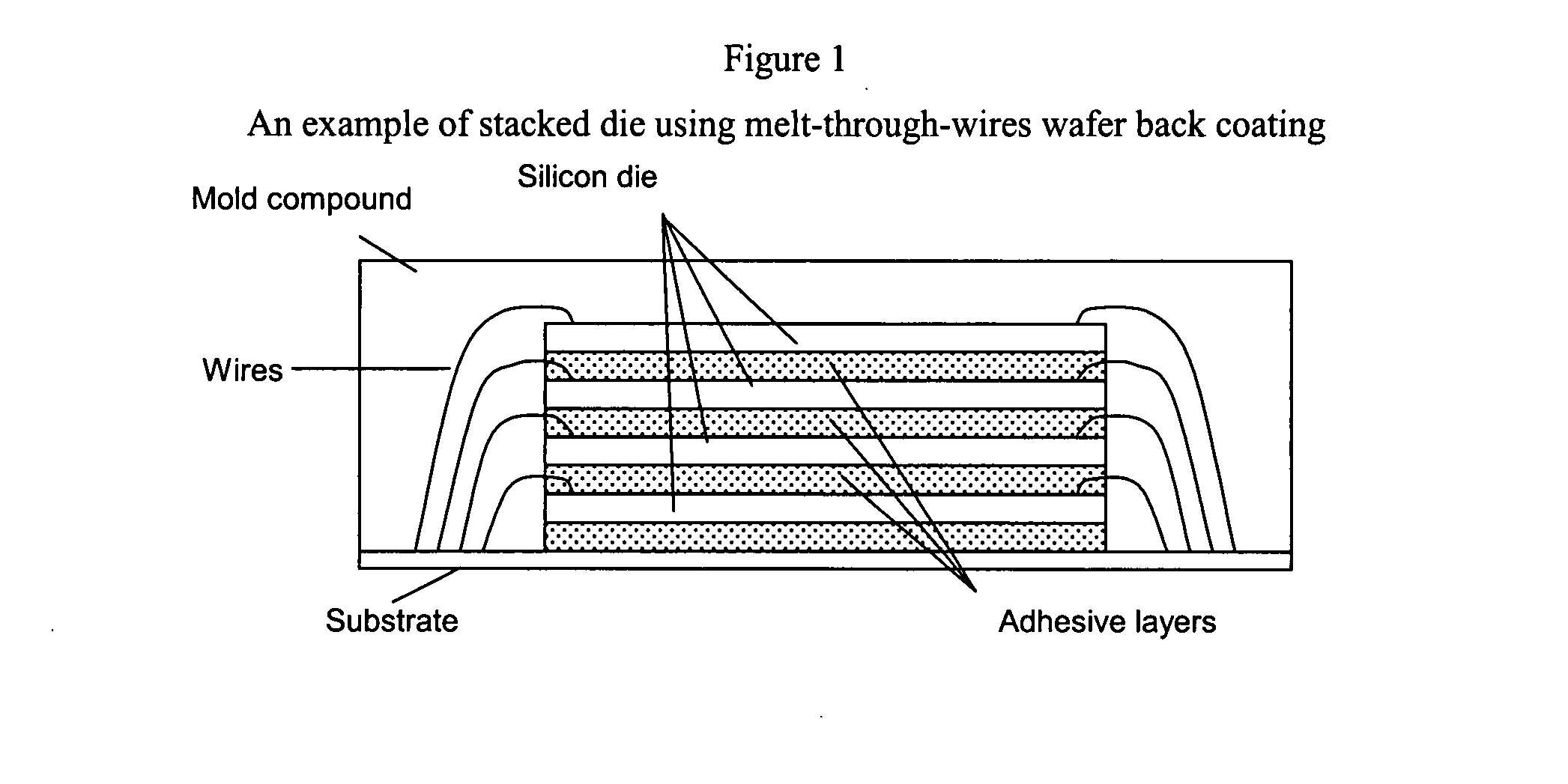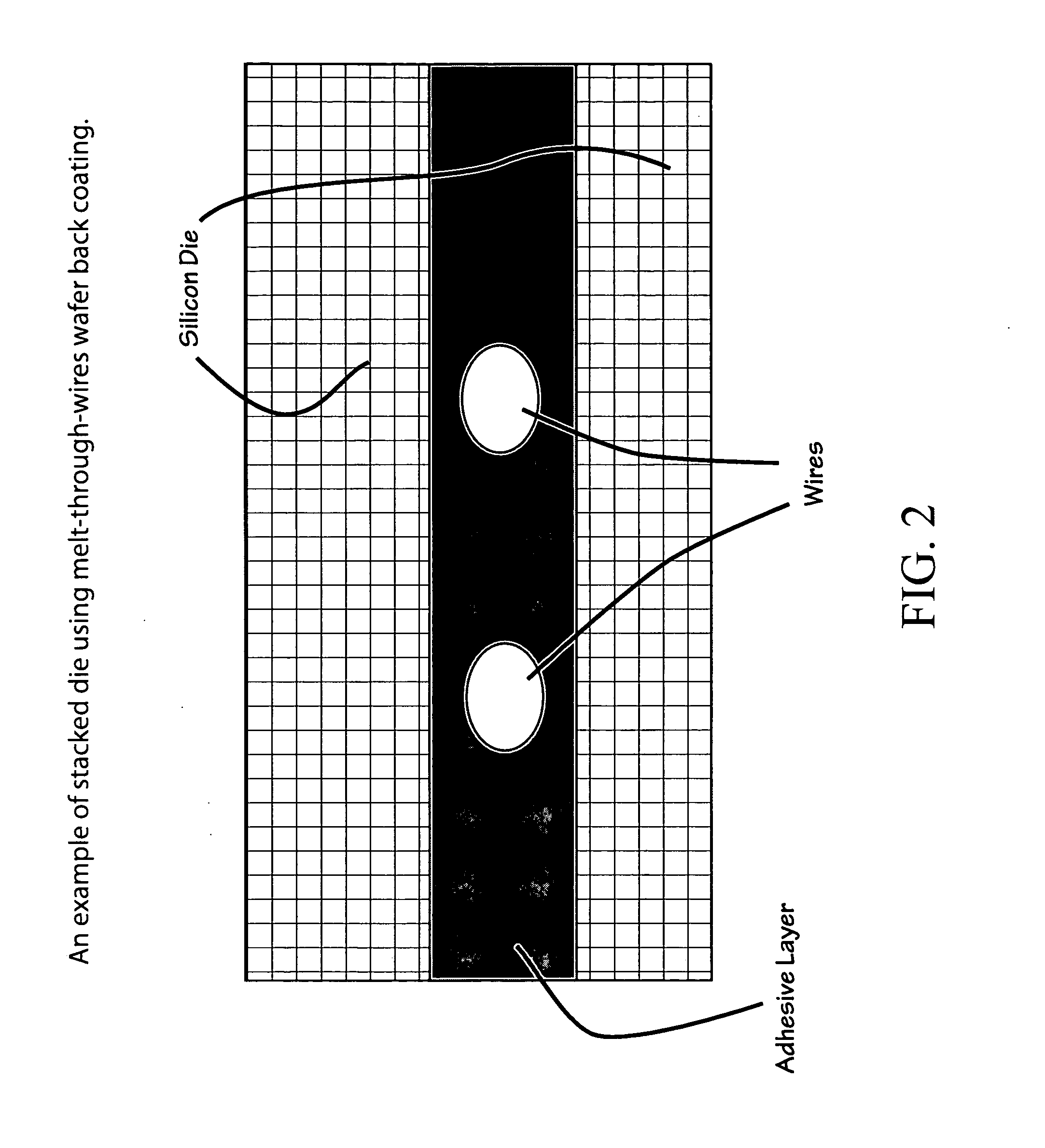Low shrinkage polyester thermosetting resins
a thermosetting resin and polyester technology, applied in the direction of electrical equipment, basic electric elements, solid-state devices, etc., can solve the problems of shrinkage, package failure and device failure, and/or unreliability, and achieve the effect of little to no shrinkage upon cur
- Summary
- Abstract
- Description
- Claims
- Application Information
AI Technical Summary
Benefits of technology
Problems solved by technology
Method used
Image
Examples
example 1
[0089]
[0090]To a 500 mL flask was added isophthalic acid (33.2 g, 200 mmol), 4,8-bis(hydroxymethyl)tricyclo[5.2.1.02,6]decane (58.8 g, 300 mmol), Empol 1008 (hydrogenated dimmer acid, available from Cognis) (28.3 g, 50 mmol), and toluene (150 mL). The reaction mixture was heated to 70° C., at which time methanesulfonic acid (3 g) was added. The flask was equipped with a reflux condenser and Dean-Stark trap, and the reaction mixture was refluxed for 21 hrs yielding the expected amount of water (9.0 mL). After cooling, toluene (110 mL) and SiO2 (10 g) were added to the flask and the mixture was stirred for 30 min. The mixture was then passed over SiO2 (20 g). After removal of toluene by rotary evaporation, Dow ERL 4140 (17.2 g, 110 mmol) and DMAP (0.76 g) were added to the mixture. The Dean-Stark trap was filled with octane and an additional aliquot of octane (8 mL) was added to the reaction mixture, and the mixture was refluxed for 2.5 days. Removal of octane by rotary evaporation af...
example 2
[0091]
[0092]To a 500 mL flask was added isophthaloyl dichloride (20.3 g, 100 mmol) and toluene (100 mL). A mixture containing the dimer diol Solvermol 908 (Cognis, 26.8 g, 50 mmol) and triethylamine (15.2 g, 150 mmol) was added over a 90 min period. The reaction mixture was stirred at room temperature for 30 min and then cooled to −15° C. Glycidol (8.2 g, 110 mmol) was added to the mixture over a 20 min period. The reaction mixture was stirred at room temperature for 3 hrs. Next, the reaction mixture was washed with brine (3×50 ml) and water (3×50 mL), and then passed over MgSO4 (15 g) and SiO2 (15 g). Rotary evaporation of toluene afforded Compound 2 (37.3 g, 79% yield).
example 3
[0093]
[0094]To a 500 mL flask was added isophthaloyl dichloride (20.3 g, 100 mmol) triethylamine (22.3 g, 220 mmol), and toluene (100 mL). A solution of bisphenol-M (26.0 g, 75 mmol) in toluene (100 mL) was added dropwise over a 10 minute period. The mixture stirred for 45 minutes, and then was cooled to 20° C. Glycidol (4.5 g, 60 mmol) was added dropwise over a 10 minute period, and the reaction was allowed to stir overnight. The reaction mixture was washed with brine (3×50 ml) and water (3×50 mL), and then passed over MgSO4 (15 g) and SiO2 (15 g). Toluene was removed by rotary evaporation. The product was a dried in an oven at 80° C. for 3 days to afford Compound 3 (29.6 g, 69.2% yield) as an orange, friable solid.
PUM
| Property | Measurement | Unit |
|---|---|---|
| Percent by mass | aaaaa | aaaaa |
| Percent by mass | aaaaa | aaaaa |
| Length | aaaaa | aaaaa |
Abstract
Description
Claims
Application Information
 Login to View More
Login to View More - R&D
- Intellectual Property
- Life Sciences
- Materials
- Tech Scout
- Unparalleled Data Quality
- Higher Quality Content
- 60% Fewer Hallucinations
Browse by: Latest US Patents, China's latest patents, Technical Efficacy Thesaurus, Application Domain, Technology Topic, Popular Technical Reports.
© 2025 PatSnap. All rights reserved.Legal|Privacy policy|Modern Slavery Act Transparency Statement|Sitemap|About US| Contact US: help@patsnap.com



